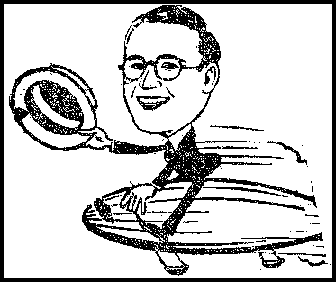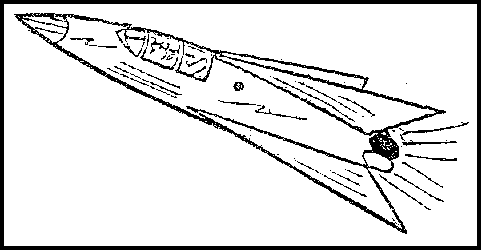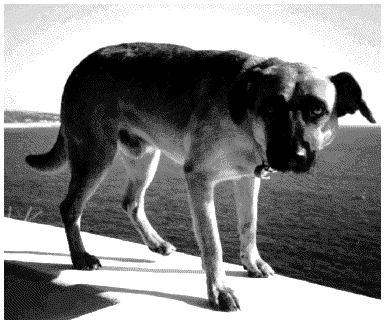A
Life!
William Shatner
(with Chris Kreski)
(Pocket Books)

In the old days, fan clubs didn't cost much. There would be free, signed photographs, and free meetings of like-minded people. Nowadays, it is licensing, copyrights, renting great halls, pulling in high-cost talent to talk to the folks and endless things to buy --- like little statues with numbers etched on them, so people will think they have "a limited edition" that will someday be valuable.
These conventions --- called "cons" by the cognoscenti --- have sprouted up like pigweed, and have become a meeting place for many lonely people who seem to have little else to do with their days and nights. Back in, say, 1950, these folks would have joined the American Legion, the Gray Ladies, the Elks, the Red Cross volunteers or the Shriners. Amidst all the tomfoolery, they would have gone out and done some good for the world, built children's hospitals, helped the impoverished, tended to the sick. But we live in a different world, don't we? It's no accident that "Star Trek's" starship bears the name Enterprise.
And it is of no importance at all, I suppose, that the original Star Trek lasted for only three seasons, that it was hokey at best, with a style of acting that went out with Buster Crabbe of Flash Gordon. It is of no importance, as well, that Star Trek plot lines were silly, simplistic and hopelessly hopeful about the future of mankind.
There are several individuals and corporations who have prospered mightily from this convention bonanza. The major beneficiary, according to Shatner's book, is a corporate entity by the name of Paramount, which has --- through copyrights and licensing --- capitalized on the endless need of people for outer-space treacle.
The other beneficiaries are those lucky few who happened to be out of a job back in 1967, when the original casting was done. One of these was William Shatner, later known as Captain Kirk. "Get a Life!" is his contribution to the esoterica of heavy-duty, non-stop marketing.
Not long ago, Shatner and his factotums were sitting around, trying to figure how in hell he could tap even further into this mother lode of mother lodes. Obviously the consensus was that instead of merely flying in and flying out of these conventions, he should hang out, see what was going on behind the scenes, and then write a book about it, sales of which would contribute to his cash flow. It was an excellent idea, but also a bit of a joke --- because Shatner, despite his vigorous protestations to the contrary, seems to have some distaste for the Star Trek co-fraternity.
At one point in the book, he says:
Fifty-billion-dollars. Let me say it again so you can properly digest the magnitude of that number. Fifty-billion-dollars! That's the conservatively estimated total of how much money Star Trek merchandise has raked in throughout the life span of the franchise. What the hell are all of you people buying, anyway?
During one convention, he tells us, "When a lovely young woman prefaced her question with the phrase, Star Trek is the most important thing in my life," I couldn't for the life of me resist replying, I'm very sorry to hear that. And then there was the time when Kate, a member of a panel on which Shatner was participating, noted an "absolutely adorable" little baby in the front row:
-
Kate: Look at that extraordinary baby ---- that beautiful baby has not stirred.
Shatner: It looks like a little alien. Babies have big heads, and big eyes, and tiny little bodies with tiny little arms and legs. So did the aliens at Roswell. I rest my case.
And so it came to pass that Shatner dressed up in costume, just like the crazies, with his own mask (dubbed Zontar, Master of the Universe), and wandered around, not unlike Nick Bottom, in "A Midsummer Night's Dream," passing unseen through the very world he helped set in motion. No one noticed him among all the other knobby foreheads, pig-tail wigs, horns, pointy ears --- the Klingons, Romulans, Scotties, Spocks --- even those who were dressed up as Captain Kirk.
In fact, the "real" Kirk ran into several Kirks, who were not in masks, and who may not have been real, either. Who is imitating whom? Is Shatner the real Kirk, or is this fake Kirk really Zontar, Master of the Universe? It's all quite confusing, in a Samuel Beckett kind of way.
Shatner goes to several cons, over the next couple of years --- interviewing people, taking notes, taking pictures. Then an amanuensis is hired on to put it all together in book form and --- voila! --- Get A Life!
The people interviewed in Get A Life! come across as very strange indeed. But the strangest of them all is an extra-terrestrial by the name of William Shatner. He and his co-writer, Chris Kreski, have dolled him up, made him nice. They play up his "self-deprecating wit and infectious enthusiasm" (to quote the poop sheet that came with the book). Still, we have a man who does and says some rather spacey things.
Shatner goes to Germany for a convention. Because of threats on his life, his sponsors hire security guards. He refers to them as My own personal Luftwaffe and Aryan behemoths. I made nervous chitchat with the Third Reich, he tells us. Ever tried to go to the bathroom with Hermann Goering standing guard outside the stall? he asks. For a country that has spent fifty years trying to escape from its past, reading such words must be puzzling, to say the least.
Once, Shatner tells us of pulling on a running suit, and going out for his daily jog. He manages to run the wrong way, and gets lost. The man who has taken us to so many strange planets, mind you, gets lost running around the block. He gets to a street corner, spots a truck, and he yells to the driver, tells him that he is William Shatner, that he needs a ride, because he's in a hurry. He gets the finger, instead.
Then there's his meeting with a woman who suffers from multiple personalities, who has "several members of the Enterprise crew inside of her, the triumvirate of Kirk, Spock, and McCoy." Clearly, says Shatner, humbly, the last thing I should be doing is playing armchair psychiatrist, offering ignorant, overly simplistic commentary on matters infinitely beyond my own layman's understanding of the human psyche.
Right. But then off we go to a session with her and her psychotherapist, where Shatner, or Kirk, or Zontar, quite beside himself with alternative personalities, starts playing armchair psychiatrist, offering ignorant, overly simplistic commentary on matters infinitely beyond his layman's understanding of the human psyche. "Jane," he concludes, "was far and away the most interesting fan I'd ever met."
Perhaps his most telling story is of the night, when he is in Africa, on safari, and an elephant chooses to park its large carcass right next to his tent. Shatner gets up and tries to shoo it away --- he tries to shoo an elephant away --- and as he is shouting and waving his arms about, he gets pooped on. Elephant poop. Lots of it. "Imagine twenty gallons of mashed potatoes falling on your head at one time," he reports. "Imagine the single stinkiest baby diaper you've ever encountered."
The last tale in the book is about Shatner's visit to the Greek Island of Santorin. The island is deserted. He visits it alone. 3000 years ago, it was a thriving community, but then came a volcano which destroyed it completely. Shatner climbs up the hill to the old, ruined public market. "On the surviving wall of what appeared to be a home, there stood a simple window frame, which I approached," he tells us. "Running my hand respectfully over the stone sill, I brushed away the dirt, blew away the dust, and noticed some graffiti which read --- I kid you not --- Star Trek lives. Star Trek is indeed universal."
Some idiot came to the carefully preserved ruins of a village and gouged stupid graffiti into the stone ruins that have stood there for thirty centuries. And instead of meditating on the tragic loss of our history and our heritage, Shatner is obviously bursting with pride at finding out, yet again, how important he is.
Ahh, Zontar, being given the finger --- or being shat on by an elephant --- may not be good enough for you.

Furniture
Plans and Instructions
For Historical Reproductions
Daniel Diehl and
Mark Donnelly
(Stackpole Books)



 Many of her old friends "get scared" when she starts telling of her involvement with Lucille. Friends are, thus, of the "before-dog" and the "after-dog" category. And, at points, her narrative makes us wonder if she is a bit bonkers about Lucille. She takes her to a once-a-week "dog-care" center. She wonders if her dog likes it, is happy, or would she rather be at home. She even went off to a summer camp for dogs and their masters. Did Lucille like it? Or was it a scam designed for the masters? Dogs make us show our inadequacies, no matter how far out. It's as if Knapp --- in her questions --- is looking for some sort of leadership. She confirms this by writing, "All dogs can be guide dogs of a sort, leading us to places we didn't even know we needed or wanted to go." As for pure dog-love,
Many of her old friends "get scared" when she starts telling of her involvement with Lucille. Friends are, thus, of the "before-dog" and the "after-dog" category. And, at points, her narrative makes us wonder if she is a bit bonkers about Lucille. She takes her to a once-a-week "dog-care" center. She wonders if her dog likes it, is happy, or would she rather be at home. She even went off to a summer camp for dogs and their masters. Did Lucille like it? Or was it a scam designed for the masters? Dogs make us show our inadequacies, no matter how far out. It's as if Knapp --- in her questions --- is looking for some sort of leadership. She confirms this by writing, "All dogs can be guide dogs of a sort, leading us to places we didn't even know we needed or wanted to go." As for pure dog-love,
